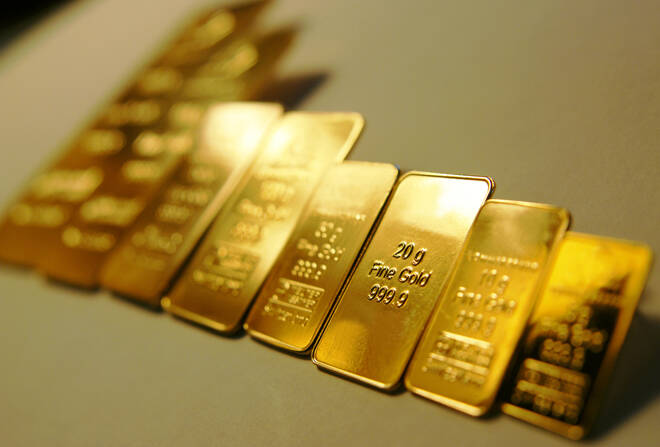Advertisement
Advertisement
Gold Prices are Poised to Test $1,800
By:
Gold prices as the 10-year yield are negatively correlated
Gold prices have broken out hitting multi-year highs versus the US dollar and have hit fresh all-time highs versus the Euro, which was first introduced in 1999. The demand for gold as the currency continues to rise in the face of the spread of the coronavirus. The increase in the yellow metal has come despite a decline in the euro and a rally in the US dollar. Historically, as the dollar increases in value, gold prices moderate. This is because the gold benchmarks are priced in US dollars, and as the dollar rises, gold prices generally moderate to incorporate the higher cost for purchasing gold using currencies other than the greenback.
With the dollar index (which is a basket of currencies versus the US dollar), hitting fresh 3-year highs, the correlation between the dollar and gold prices has broken down. So what is driving gold prices higher?
Gold prices are also negatively correlated to US yields. During 2019 and the beginning of 2020, the negative correlation between gold prices and the US 10-year yield has increased. The current 50-week correlation between gold prices and the US 10-year yield has hit -93%, which means that the values move in lockstep in different directions. The decline in the US 10-year yield reflects the market’s concerns with future growth based on several factors including the spread of the coronavirus.
Technical analysis
The US 10-year yield is poised to break down below an upward sloping trend line which could be a further catalyst for the advancement of gold prices. If the yield cannot break below this level the negative correlation between the 10-year yield and gold prices will start to unwind.
Gold prices are breaking out, despite the rally in the US dollar. Prices have hit a fresh 7-year high and have hit all-time highs versus the Euro.
Medium-term momentum has turned positive as the MACD (moving average convergence divergence) index generated a crossover buy signal. This occurs as the MACD line (the 12-day moving average minus the 26-day moving average) crosses above the MACD signal line. The MACD histogram has moved above the zero-index level which is also a buy signal. The MACD histogram is printing in the black with an upward sloping trajectory which points to higher prices.
The relative strength index (RSI) is moving higher with a target level of 85, which was reached in both January 2020 and June of 2019. The continued acceleration of the RSI is important as prices are breaking out. What you don’t want to see is a continued rally in gold prices and a retracement of the RSI which would be considered a divergence. When prices are moving one way and momentum is decelerating, the continued movement of price action is suspect.
Bottom Line
The trend is gold prices are upward, and momentum has turned positive pointing to higher prices. A breakdown in the US 10-year yield will also generate a tailwind for gold prices. Additionally, if the US dollar stops rising quickly the current headwind created by the dollar could also buoy gold prices. The price target on gold is the 2012 highs at 1,796.
About the Author
David Beckerauthor
David Becker focuses his attention on various consulting and portfolio management activities at Fortuity LLC, where he currently provides oversight for a multimillion-dollar portfolio consisting of commodities, debt, equities, real estate, and more.
Latest news and analysis
Advertisement
